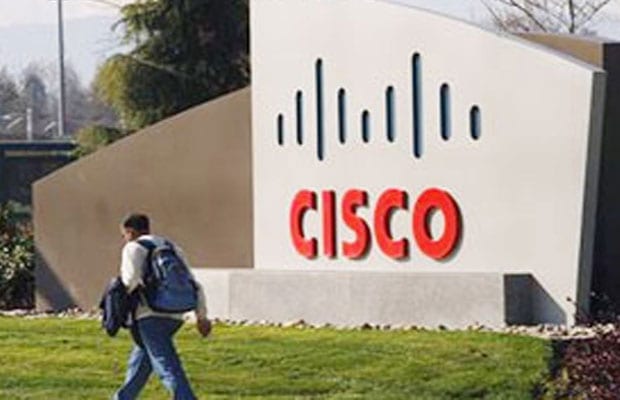To make its products and services more affordable, Cisco is mulling to make pay-per-use business model a new norm of its go-to-market (GTM) strategy. IT networking giant is bundling hardware and software services together as a solution that a customer can consume in a flexible way, said an executive. The transition will take 18-24 months as Cisco will have to change its GTM strategy, re-engineer back-end and business processes.
“As the world is demanding a flexible consumption model, that is inevitably how Cisco has to move. Hence, you will see Cisco coming out with more and more capabilities for customers who are consuming that kind of service and on a recurring revenue model, which can be software as a service (SAAS) or consumption model or anything else that is moving towards anything as a service (XAAS) model,” VC Gopalratnam, SVP-IT and CIO – International, Cisco told EC.
- Advertisement -
San Jose, California headquartered firm which provides products and services for transporting data, voice, and video traffic across intranets, extranets, and the Internet is facing stiff competition from new-age software driven tech companies like Amazon Web Services (AWS), VMware, Avaya, Polycom among others. It is now looking to project itself more as a software driven solution provider than the existing tag of hardware networking giant.
“You no longer compete with companies you would have competed 10 years ago. The whole notion of competition has changed as everyone is doing everything. We are now in the middle of a transition from being called a hardware company to more of a solutions company where we are bundling hardware, software services together as a solution that a customer can consume in a flexible way,” said Gopalratnam.
Cisco is already offering some of it collaboration solutions as pay-per-use basis but to expand it further, it has recently launched a service called Cisco Start that allows small and medium enterprises (SMEs) to go digital with wireless, secure connectivity for as less as $70 per user per year (about Rs 4,600). Currently, company has about 30,000 SMEs customers in India and over the next three years its aims to triple this number to 90,000. “We are making the shift ourselves. We are designing digital products to give customers a flexible way of consuming our product and services,” said Gopalratnam.
“There are two benefits of pay-per-use model. First, Cisco will get sticky revenue as the customer will pay month after month. Second, SMB sector is huge. In India alone, there are more than 50 million SMEs. The pay-per-use model will help Cisco in reaching out to more SMEs,” said Jitender Miglani, founder of research firm R&P.
- Advertisement -
Cisco product categories are spread across switching, next-generation network routing, collaboration, service provider video, data center, wireless, security and emerging technologies. In each of these, hardware giant compete with numerous vendors. There has been gradual rise in number of competitors providing niche product solutions. Also, some of the competitors for enterprise data center business like Dell EMC have made new strategic alliances, designed to position them to provide end-to-end technology solutions for the enterprise data center. As a result of all of these developments, Cisco face greater competition in the development and sale of enterprise technologies.
“We are aware that world is changing and competitive landscape is changing. We are completely re-engineering our model and GTM. We know this transition will take time but we are getting positive feedback from analysts and customers that we are making the right investments,” said Gopalratnam.
Other key challenge for Cisco is network modernisation. Over the past few years, lot of technology intervention has gone into modernising digital infrastructure but one of the most critical components – networking – is still legacy based. Virtualisation and software-defined networking (SDN) have not been able to make substantial in-road. But delay can’t prolong too long. Many leading firms have moved away from a traditional network architecture to a software defined network architecture. Lot of these developments are happening because of companies like VMware, Arista, Juniper etc.
Cisco is still predominantly the largest partner for many firms including VMware for NSX. But it’s not 100% Cisco anymore. “Earlier the network was probably 95% Cisco and 5% everybody else. But today it is probably more like 60-70% Cisco and remaining 40% is Arista, Juniper, Brocade, Dell, HP etc. So there is actually an option now. I know one company for 10 years has only work with Cisco on a rate contract. Now for the first time they are doing a reverse auction. Because with software your fabric can be anything,” said India head of a global virtual infrastructure firm.
It is not that Cisco is oblivion to this reality. In its annual report for 2015 Cisco said, “If we do not introduce products related to network programmability, such as software-defined-networking products, in a timely fashion, or if product offerings in this market that ultimately succeed are based on technology, or an approach to technology, that differs from ours, such as, for example, networking products based on ‘white box’ hardware, our business could be harmed.”
Gopalratnam said that the modernisation of the network has to be a concerted effort of all the stake holders. “I don’t think there is necessarily a delay. The reason why it takes time as you have to do it at scale, in secured way and abstract the complexity of what you are doing from the end user. In order to do that, it takes time and one organisation cannot do this and that’s why you need to work with an ecosystem,” he said.
“Cisco is in the middle of huge digital transformation. Our relevance has never been higher than right now,” said Gopalratnam.
If you have an interesting article / experience / case study to share, please get in touch with us at [email protected]
Advertisement



